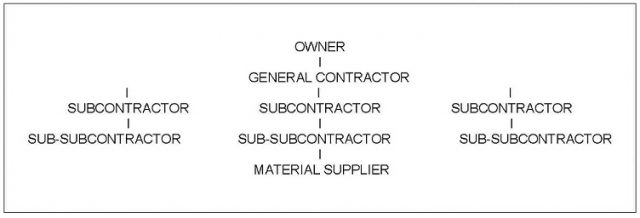By Johanna McNulty
Whether you are thinking about embarking on a major renovation project, or building your own custom dream home on your own lot, there are important legal requirements in the Construction Lien Act that may apply to you. The purpose of this article is to provide you, as a homeowner, with a brief introduction to some of these rules.
What is a construction lien?
The starting point is to understand what a construction lien is and to do so, you will first need to appreciate why they exist.
Essentially, the construction industry is unique in the exposure to financial risks that are faced by those in the construction trades. These risks are distinctive to the construction industry because most construction work is performed by trades that do not have a direct contract with the owner of the property upon which work is being performed and do not have any financial security or guarantee of payment.
For example, if you hire a contractor to do a kitchen renovation, they may subcontract the construction and installation of the cabinetry to a cabinetmaker whom builds and installs the cabinetry. While the cabinetmaker supplies and installs materials and performs work in your home that will ultimately benefit you and enhance the value of your home, it does not have a contract with you which says that you must pay them. If the owner does not pay the contractor that hired the cabinetmaker, the contractor may not have the means to pay the cabinetmaker. The cabinetmaker may not then have the ability to pay its suppliers, neither of which may be able to directly sue the homeowner without a contract. You can see from this example the vulnerability of subtrades and suppliers on a construction project.
When trying to explain the flow of funds on a construction project, it is often described as a pyramid.
At the top of the pyramid is you, the owner. Below the owner is the party (or parties) with whom the owner has a direct contract, often referred to as a general contractor or simply, contractors. The contractor may then hire other contractors to complete the work, these are called subcontractors. A subcontractor may also subcontract a portion of their work and these become sub-subcontractors and this can continue down the line.
As work progresses on a project, money usually flows down the pyramid because typically as work is completed, payment is made by the owner to the contractor and ultimately to the various subtrades.
Based on the realities of the flow of funds on a project and the vulnerability of subtrades in the event of non-payment, the law has devised a means of protecting trades from the top of the pyramid to the bottom, and this is called the construction lien.
The basic premise is this: where a person/company supplies services or materials to an improvement to a property for an owner, contractor or subcontractor, they have a lien upon the interest of the owner in the premises which are improved for the price of those services or materials (section 14(1), Construction Lien Act).
The lien itself is a security interest in your (the owner’s) property; which interest can be registered against title to your property if you as the owner or any of the other players in the construction pyramid fail to make payment to a contractor or subcontractor below them in the pyramid. Ultimately, there is the risk that if successful in a construction lien action, a contractor/subcontractor can enforce its lien rights and recover what it is owed through the sale of a property to the extent of the value of the lien in the case of a contractor, or the value of the statutory holdback in the case of a subcontractor.
Basically, a construction lien operates to prevent you, as the owner, from receiving improved land without making payment for the improvement and in this way, contractors and subcontractors are protected at all levels of the construction pyramid, even if they have no contract with the owner.
It is important to note that there are strict timeframes and legal requirements on contractors and subcontractors to register liens within either 45 days of the completion of the project, if it is a contractor, or within 45 days of the last supply of materials or labour, if it is a subcontractor. If these timeframes are not properly complied with, lien rights can be lost. It is important for homeowners to track these timeframes as well, to know if liens registered against their property are legitimate or not.
Also, not every contractor or subcontractor who does work on a property is entitled to a lien and it depends on the nature of the work that was supplied. Generally speaking however, if the work enhances the value of the land and is not simply repair or maintenance, it is work which gives rise to lien rights.
The main issue for any owner if a construction lien is registered against his or her property, is that title to their property becomes encumbered by the lien and can create issues if you intend to sell your property or refinance a mortgage. There is also the risk of being sued in a civil case if the contractor or subcontractor is not paid and they move forward with their claim for payment secured by the lien.
Owner’s Holdback Requirements
The most significant obligation on homeowners provided for under the Construction Lien Act is the holdback requirement.
According to section 22 of the Construction Lien Act, each “payor” on a construction contract, is required to hold back 10% of the price of the services or materials as they are actually supplied under the contract until all liens that may be claimed against the holdback have expired.
You are obligated as a homeowner to comply with this requirement despite any wording in your contract with a contractor which may provide otherwise.
As work progresses and payments are made throughout a project, you as a homeowner must ensure that you are deducting 10% of the value of the services or materials supplied. For example, on a $6,000.00 invoice, you would retain $600.00. At the end of the project, you should have retained 10% of the value of the work actually performed and invoiced. If the project was a $60,000.00 job, the total holdback the owner should have retained would be $6,000.00.
The holdback is the final payment that you as a homeowner will have to make to your contractor(s) and it should only be made 45 days after the expiry of all liens that may be claimed against the project. As a homeowner, you should track when the completion of a project occurs and the last attendance of trades on site. The most prudent course of action for an owner is to ask their lawyer to review title to their property on the 46th day after a contract has been completed to ensure that no liens have been registered against title to their property. If title is clear, the holdback can be paid and if it is not, the owner should not make any further payments to the contractor and seek legal advice.
Essentially, once a lien is registered, or you receive notice of a lien, your payments on the project stops.
The holdback monies constitute a trust fund for the benefit of the contractor or subcontractors working on a construction contract and they must not be used for any purpose other than payment of the contract, or this would be a breach of trust and could amount to liability for an owner if the funds are not properly handled. (The Construction Lien Act provides specific rules on the trust obligations of owners and contractors/subcontractors that will be the subject of another article.)
For homeowners, the ultimate risk of a failure to abide by the holdback provisions under the Construction Lien Act is threefold:
- Potential liability under the trust provisions of the Act;
- The potential to have to pay twice. In other words, although a homeowner may have paid their contractor in full, if the contractor fails to pay subtrades or suppliers, (or if a subtrade has failed to pay a sub-subtrade or supplier), any unpaid subtrades/sub-subtrades or suppliers that are entitled to register a lien can make a claim against the holdback monies, or the value of the holdback monies even though they were paid out. When this occurs, an owner could be liable to pay the value of the holdback twice on the project, once when he or she made the initial improper full-payment of the contract and the second time, for the subtrade(s) that have proven a legal entitlement to the holdback monies; which the owner should have retained for the applicable 45 day period. On a $100,000.00 renovation project, that could mean homeowner liability of $10,000.00; and,
- You will be named as a party to a lawsuit for both breach of trust and under the Construction Lien Act by the lien claimant if the lien claimant perfects its lien.
There are also special rules which apply and may increase the value of the holdback to the full sum claimed by a subtrade where written notice of the lien is given to an owner.
It is possible to remove a lien from title if you need to sell your property or deal with your mortgage by “vacating” the lien by posting money in court. What this means is that when a lien is vacated, the lien claimant(s) have a security interest in the monies posted in court and no longer with the owner’s land and the lien is removed from title. It is then up to the parties to go through litigation or otherwise resolve the matter outside of court to determine entitlements to the holdback funds.
It is significant to note that even if there is more than one lien claimant, the owner’s liability is generally (with exceptions including notice holdback requirements) limited to the value of the holdback and the lien claimants are only entitled to their proportional share. Owners may also be liable for breach of trust claims, as noted above and of course, under the contract with any trade contractors, with whom the owner had a direct contract, for the full value of any unpaid contracts.
The above may seem daunting to many homeowners undertaking work on their homes, but it is meant to serve as an important introduction for homeowners to what are little known obligations under the Construction Lien Act. For specific guidance on navigating construction lien issues, homeowners are encouraged to seek the advice of a lawyer.
The information contained in this article is provided for general information purposes only and does not constitute legal or other professional advice. Readers are advised to seek specific legal advice in relation to any decision or course of action contemplated.
The author, Johanna McNulty, is a member of the Construction Law Department at Lancaster Brooks and Welch LLP and her practice focuses on helping contractors, developers and owners navigate the complex world of construction liens, disputes and litigation.


